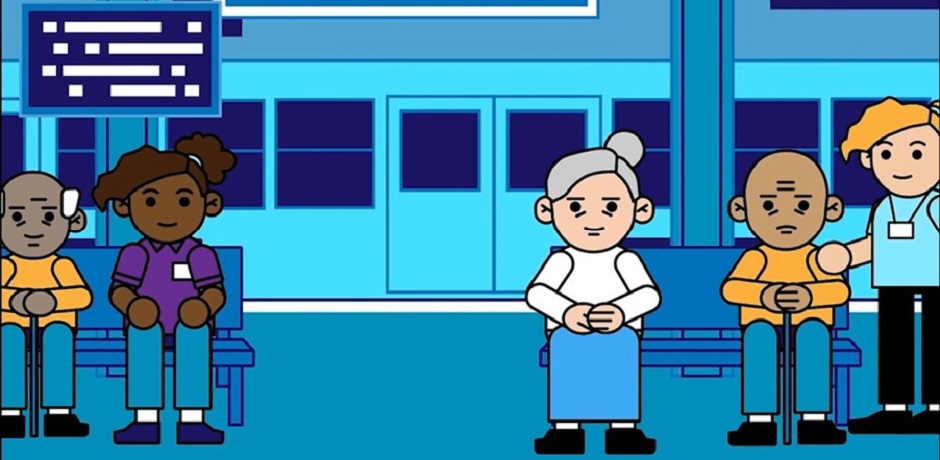)
Digital dementia care: making it real
Martin Knapp (NIHR SSCR, LSE) and Gloria Wong (University of Hong Kong)
Martin Knapp, Director of the NIHR School for Social Care Research, and Gloria Wong explore evidence on effectiveness and cost-effectiveness of digital technology in supporting people living with dementia and their carers.
Alzheimer’s disease and other dementias have medical labels, and a diagnosis will usually lead to contacts with primary and secondary healthcare services. But social care is a far bigger player in the lives of most people with dementia, whether provided through home care, residential services, community facilities or delivered by family and other unpaid carers.
There are thousands of scientists across the world looking to develop treatments that might slow down, stop or even reverse declines in cognition and health, but there are no disease-modifying treatments for dementia available yet. Knowledge about prevention is accumulating fast, but the impact on prevalence can only be slow. Consequently, attention must focus on how to improve care and support. Far easier said than done, of course, given the many challenges facing the care system. These include workforce shortages and the effects of demographic, economic and social trends on the available supply of carers.
Is digital technology the answer?
Yes and no.
If you ask almost anyone who knows the health and care field, they would likely say that technology will eventually play much bigger roles in the lives of people who draw on social care and people who provide that support. So, yes, digital technology is potentially a solution to workforce shortages or geographically distant families or social isolation.
But you don’t have to be a 21st Century Luddite to answer ‘no’. This is because it is proving so very hard to work out how we can get from where we are today to a technology-enabled care system over the next few decades.
Earlier this year, along with colleagues in the NIHR Older People and Frailty Policy Research Unit, we rapidly reviewed evidence on effectiveness and cost-effectiveness of digital technology in supporting people living with dementia and their carers. We had conducted a similar study in 2015, when we also explored the views and experiences of various people in the dementia care ‘system’.
In both studies, there were many encouraging signs that technology has potential to improve lives. In our recent report, we describe how the more promising digital technologies include mobile, touchscreen, ICT and multimedia to support daily functioning, meaningful activities and social engagement, as well as virtual care that involves tailored dementia-care strategies delivered with a co-resident carer. These technologies share two features:
- They deploy or repurpose existing commercial solutions for people living with mild to moderate dementia.
- And they emphasise person-centredness, social connectedness and meaningful engagement.
If we already have some promising technologies, what is stopping their wider roll-out?
Barriers
There are many reasons why it can be difficult to introduce digital technology to support people living with dementia and/or carers. Many of these reasons have been discussed in wider contexts by other researchers – for example, in important research being undertaken by groups in Oxford, Sheffield, KCL, Stirling, Bristol and elsewhere. Trish Greenhalgh and colleagues, for example, show how many technologies in health and social care can appear promising, but face often sizeable challenges of non-adoption, abandonment, difficulties in scaling up, spread, and sustainability (what they call the NASSS framework).
Specifically in the dementia field, a helpful way to categorise technologies is into those that are used by people living with dementia, those that are used with them and those used on them. These represent different degrees of involvement and control, perhaps as symptoms become more severe. It is clearly important not to assume that an individual is unable to use a technology – that is, to move too quickly from ‘by’ or ‘with’ to ‘on’ – even if it takes more support or time. Sometimes the difficulty is not because an individual’s abilities change but because the technology is poorly designed.
This is the design barrier: where technologies have not been calibrated or adapted to fit the circumstances and preferences of individuals. This becomes an even greater barrier if capabilities change over time, perhaps as dementia progresses in severity, or because of poorer manual dexterity. As needs change, so too could the role that technology plays in someone’s life. But whilst a person-centred technology that was appropriately designed ought to be in high demand, it can be more complicated and expensive to develop and adapt, which could push up its price. This is the familiar tension between individualisation and scalability.
We all know someone who just must have the very latest gadget, even if – functionally speaking – it doesn’t make much difference to their life. Most of us are probably not such conspicuous consumers. We employ a simpler rule of thumb: is this gadget going to make life easier? If not, then even the snazziest-looking appliance and slickest sales pitch will not convince us to buy it. But as technologies get more complicated, it can get harder to judge whether they are useful to us.
This is the evidence barrier – not enough evidence that new technologies really improve lives by, say, supporting independent living, reducing social isolation, or promoting wellbeing. We are not arguing that every new product needs an all-singing, all-dancing evaluation before it gets onto the market, even though we rightly expect this of new medicines. But if only it was possible to see a bit more evidence on effectiveness, it would greatly support wider adoption.
Another barrier is affordability. Developing a complex technology takes time, thought and resources. Developers want to recoup their investment as soon as they can, but they need to set a price that the market will bear. Increasingly it seems, new care-related digital technologies will have to be privately rather than publicly purchased. This makes it imperative that they are experienced as useful and effective. But whether they are affordable is another question – and unaffordable technologies further widen the ‘digital divide’.
Sometimes, there is also a ‘stigma barrier’: individuals may not want to be seen to be using a device such as a pendant alarm because that suggests to them or to others that they are becoming frail and dependent. Mainstream technologies – smart phones, tablets and so on – will be more attractive from this point of view because everyone uses them. Adapting them to support care in some way would obviously be a good way forward.
Some people feel very hesitant about using digital technologies. Older people who have not grown-up using computers in the workplace or smart phones may be distrustful of online services, fearing identity theft, misuse of their personal information or other fraud. This trust barrier mustn’t be underestimated. It can be especially problematic if someone is aware that they are losing some cognitive abilities or if they have no one around to offer advice.
Another challenge – and it can easily become a barrier to technology take-up – is the worry that a monitoring or other digital device will replace in-person contact with a health or care professional. For many people who live alone, regular visits by a community nurse or care worker are utterly precious.
From our review and from other sources, it is obvious that a major barrier in today’s health and social care systems is that staff often don’t have the skills or (especially) the time to support people to use digital and other new technologies. Workforce pressures are so intense that it becomes impossible to add additional time onto home visits to explain a new gadget or to respond when something goes wrong. Local community organisations can potentially offer that kind of support, but they are not active everywhere across the country, and they themselves may have workforce challenges.
Finally, there is the related problem that some health and care professionals appear reluctant to recommend some digital technologies because they see them as inappropriate or too difficult for people living with dementia. They may be projecting their own worries or technological hesitation onto others or anticipating (perhaps rightly) that they may cause the individual too much hassle and anxiety.
Moving forward
Efforts are already being made to support our health and social care systems to embrace new digital opportunities. Just recently, NHS England published a report on how motivation to use health and social care services could be increased. That report built on a policy paper in June, A plan for digital health and social care. Exciting plans are afoot, but for some people who rely heavily on health and social care – for example, many people living with dementia – what is needed is not just the development of better digital record systems or more apps to support self-care – important though they undoubtedly are. To release the potential of digital technologies in dementia care, much needs to be done in what we might clumsily call the ‘non-digital sphere’.
The Holy Grail: tech that make a real difference
The WHO Global Action Plan on Dementia, published last year, noted that ‘Research is needed to find a cure for dementia, but research is equally needed into prevention, risk reduction, diagnosis, treatment and care, including the disciplines of social science, public health and implementation research’. WHO followed up in October this year with their blueprint for dementia research. In this, as in many national strategy documents, digital advances get heralded as offering exciting new opportunities to improve diagnostic and clinical processes, as well as ongoing support.
Bright people in Big Tech, in smaller enterprises and start-ups, in universities and elsewhere are needed to create digital technologies to help improve the lives of people with dementia and their carers. But equally bright people are needed to make the digital revolution real – to make it acceptable and accessible to people who draw on social care, adaptable to changing circumstances, in tune with individuals’ preferences, and affordable to public and private purchasers – the Holy Grail for any civil society that is moving towards digitalisation.
Citation
Knapp M, Wong G (2022) Digital Dementia Care: Making It Real, NIHR School for Social Care Research Blog, 12 December 2022
Read NIHR Social Care Speciality posts here →





